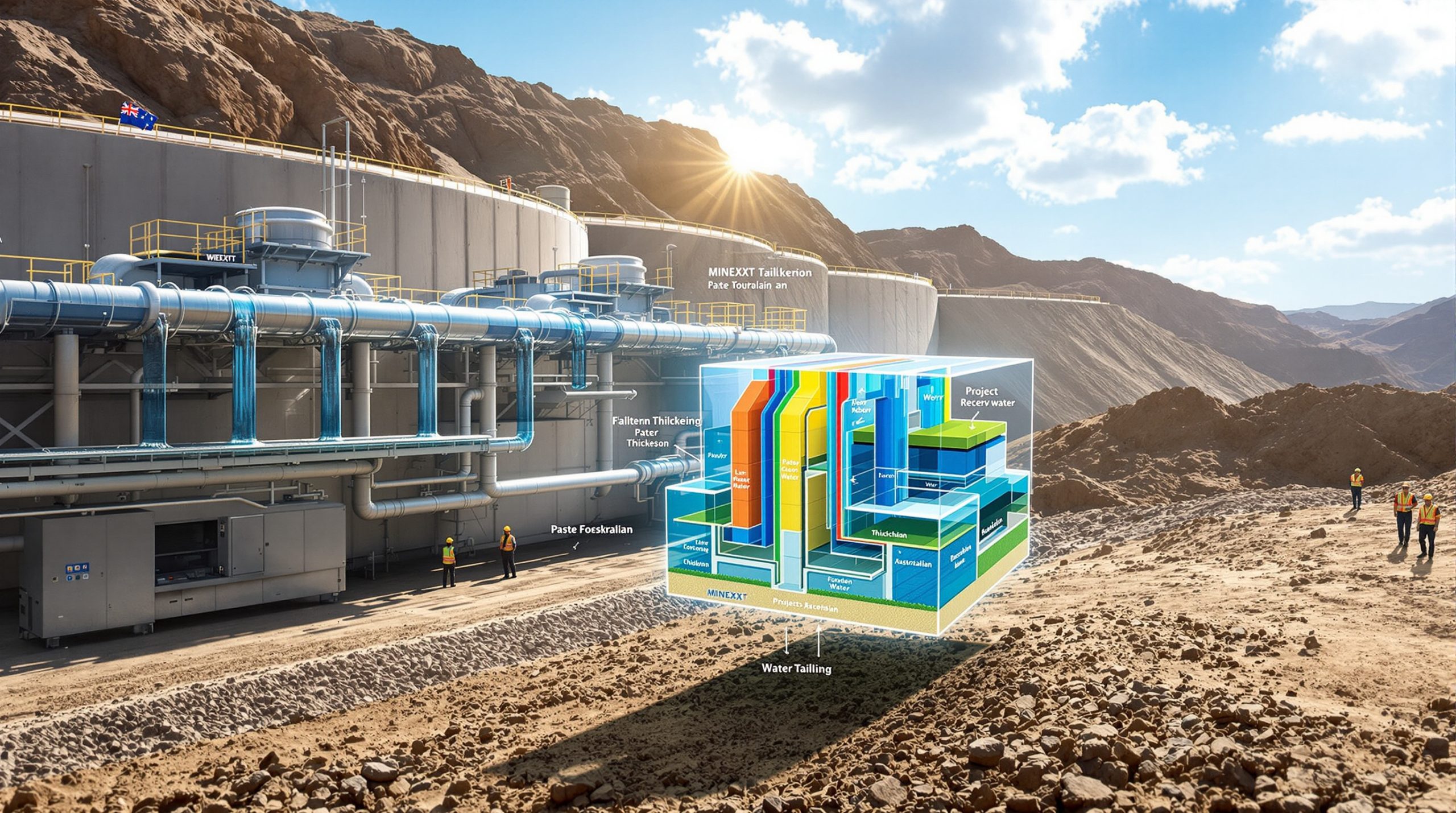What is Trial Mining in the PGM Sector?
Trial mining represents a critical phase in mine development where companies extract limited quantities of ore to validate geological models, test mining methods, and assess economic viability before full-scale operations begin. In the platinum group metals (PGMs) sector, this approach helps minimize investment risks while gathering essential operational data.
Trial mining in Limpopo's PGM sector serves as a proving ground for both geological theories and operational methodologies. Companies typically invest in these smaller-scale operations to validate mineral grades, test equipment performance in actual conditions, and refine production processes before committing substantial capital to full-scale mining.
As Martin Creamer, Mining Weekly Publishing Editor, noted, "Trial mining has begun at a new platinum group metals project in Limpopo," highlighting the industry's ongoing investment in this critical development approach (Mining Weekly, August 2025).
Key Objectives of PGM Trial Mining
The primary objectives of trial mining in the PGM sector include:
- Geological validation: Confirming ore grade continuity, mineral distribution patterns, and structural characteristics across the deposit
- Mining method optimization: Testing proposed extraction techniques under actual underground conditions
- Equipment performance assessment: Evaluating machinery reliability, productivity, and maintenance requirements
- Metallurgical testing: Collecting bulk samples for process optimization and recovery rate verification
- Operational procedure development: Establishing standard operating procedures and safety protocols
- Financial model validation: Gathering real-world cost data to refine economic assumptions
These objectives collectively reduce project risk while providing invaluable data for final investment decisions and modern mine planning.
Why is Limpopo Province Significant for PGM Mining?
Limpopo Province has emerged as a cornerstone of South Africa's PGM industry due to its exceptional geological characteristics and strategic advantages. The region's northern limb of the Bushveld Complex contains some of the country's most promising PGM deposits, with distinctive features that set them apart from other mining regions.
The province's unique geological formations create opportunities for more efficient mining approaches than traditionally possible in other PGM-rich areas. This combination of favorable geology and established infrastructure makes Limpopo increasingly attractive for new PGM development.
Geological Advantages of Limpopo's PGM Deposits
Limpopo's PGM deposits feature several distinctive geological characteristics that provide significant mining advantages:
- Exceptional reef structure: As Martin Creamer observed, "It has got a very high reef wall and it will allow for mechanised mining. In fact, bulk mechanised mining and with a high grade they are looking for very high value" (Mining Weekly, August 2025)
- Favorable mineralization patterns: More consistent PGM distribution compared to other Bushveld regions
- Greater mineral concentration: Higher grades in certain areas allowing for more selective mining approaches
- Accessible depth profiles: Many deposits remain within economically viable mining depths
- Predictable structural geology: Less faulting and displacement than in other PGM mining regions
These geological advantages translate directly to operational efficiencies and economic benefits for mining operations.
Strategic Location and Infrastructure Benefits
Beyond its geological advantages, Limpopo offers strategic benefits that support mining operations:
- Established power distribution networks: Access to the national electricity grid with potential for renewable energy integration
- Water resource availability: Proximity to water resources necessary for processing operations
- Transportation corridors: Well-developed road networks connecting to major ports and industrial centers
- Skilled workforce access: Regional mining heritage providing experienced personnel
- Processing infrastructure: Existing concentration and smelting facilities reducing capital requirements for new operations
These infrastructure advantages help reduce development timelines and capital requirements for emerging PGM operations in the region, contributing to SA mineral beneficiation opportunities.
Recent Trial Mining Developments in Limpopo
The PGM sector in Limpopo has recently seen significant trial mining initiatives that signal growing confidence in the region's mineral potential. These developments represent strategic investments in South Africa's PGM future and establish foundations for expanded underground operations.
Recent trial mining activities have focused on validating extraction methodologies, confirming grade continuity, and establishing operational frameworks for long-term production. These initiatives combine traditional mining expertise with cutting-edge technologies to maximize efficiency and safety.
Sandsloot Underground Project Overview
Among the most significant recent developments is the commencement of trial mining at the Sandsloot underground project. This initiative represents a strategic expansion of PGM mining operations in the region, building upon the success of nearby operations.
As reported by Mining Weekly (August 2025), "This Sandsloot will be an underground [operation]." The project is owned by Valterra, which is "primary listed in Johannesburg, secondary listed in London." This development is particularly noteworthy as it complements the existing Mogalakwena operation, which is widely recognized as "the world's best platinum mine" according to industry observers.
The Sandsloot project strategically transitions from open-pit to underground mining methodologies, leveraging the region's exceptional geological characteristics. This approach allows for targeted extraction of high-grade ore bodies while minimizing surface disruption and environmental impacts.
Technical Innovations in the Trial Phase
The Sandsloot project and other Limpopo trial mining operations are implementing several technical innovations during their development phases:
- Advanced bulk mechanized mining systems: Specialized equipment adapted for Limpopo's unique reef structures
- Real-time performance monitoring: Digital systems tracking equipment productivity, operator performance, and maintenance needs
- Enhanced ground support technologies: Custom-designed support systems for high reef wall conditions
- Automated ore handling solutions: Reducing manual handling while increasing throughput capacity
- Ventilation-on-demand systems: Optimizing air quality while reducing energy consumption
These innovations reflect the industry's commitment to developing more efficient, safer, and more sustainable underground mining marvels through technological advancement and operational excellence.
How Does Underground PGM Mining Differ from Opencast Operations?
Underground and opencast (open-pit) PGM mining represent fundamentally different approaches to mineral extraction, each with distinct operational characteristics, economic implications, and environmental considerations. Understanding these differences is essential for evaluating Limpopo's transition toward more underground PGM operations.
The shift from opencast to underground mining in regions like Limpopo reflects both the maturation of existing operations and the industry's growing focus on accessing deeper, high-grade ore bodies with reduced surface impacts. This transition requires significant adaptations in mining methodology, equipment selection, and operational planning.
Comparative Economics and Operational Challenges
Underground and opencast PGM mining present different economic profiles and operational considerations:
| Factor | Underground Mining | Opencast Mining |
|---|---|---|
| Capital intensity | Higher initial development costs | Lower initial costs but higher ongoing stripping costs |
| Operating costs | Higher per-ton extraction costs | Lower per-ton extraction costs |
| Production flexibility | More constrained production rates | Greater production flexibility |
| Grade selectivity | Higher selectivity possible | Less selective, more bulk extraction |
| Development timeframe | Longer lead time to production | Faster path to initial production |
| Operational complexity | More complex systems and logistics | Simpler operational management |
| Safety challenges | Greater exposure to geotechnical risks | Different safety profile (equipment, pit slope stability) |
Limpopo's underground PGM operations benefit from the region's unique geological advantages, particularly the high reef walls mentioned by industry experts. These characteristics enable more efficient underground mining approaches than typically possible in other PGM regions, helping offset some of the traditional cost disadvantages of underground methods.
Environmental and Social Impact Differences
The environmental and social footprints of underground versus opencast mining differ significantly:
- Surface disturbance: Underground operations require substantially smaller surface footprints than equivalent opencast mines
- Visual impact: Underground mines have minimal visible impact compared to the extensive landscape alterations of open pits
- Dust generation: Underground mining produces significantly less dust, improving local air quality
- Water management: Underground operations generally require different water management approaches with potentially lower impact on local watersheds
- Waste rock volume: Underground mining typically generates less waste rock per ton of ore produced
- Rehabilitation requirements: Smaller surface disturbance simplifies eventual mine closure and rehabilitation
- Community proximity: Underground operations can sometimes operate closer to communities with reduced impact
These environmental advantages make underground mining increasingly attractive in environmentally sensitive areas and regions with competing land uses or community concerns.
What Mining Methods Are Being Tested in Limpopo's PGM Trial Operations?
Trial mining operations in Limpopo are evaluating various extraction methodologies to determine the most effective approaches for the region's unique geological conditions. These trials focus on optimizing productivity, safety, and resource recovery while adapting to specific ore body characteristics.
The selection of appropriate mining methods significantly impacts project economics, operational efficiency, and long-term sustainability. Limpopo's trial mining operations are therefore systematically testing multiple approaches to identify optimal solutions for full-scale development.
Mechanized Mining Approaches
Mechanized mining methods feature prominently in Limpopo's trial operations, leveraging the region's favorable reef structures. As noted by industry experts, the "very high reef wall…will allow for mechanised mining. In fact, bulk mechanised mining" (Mining Weekly, August 2025).
Key mechanized approaches being tested include:
- Longhole open stoping: Utilizing the stability of Limpopo's high reef walls to create larger production stopes
- Room and pillar mining: Adapted for hard-rock conditions with mechanized drilling and loading
- Cut and fill methods: Using cemented backfill to maximize recovery while maintaining stability
- Drift and fill techniques: Progressive extraction with engineered backfill for ground control
- Mechanized bench mining: Stepped extraction leveraging gravity-assisted ore flow
These mechanized approaches offer several advantages over conventional methods:
- Worker productivity rates typically 3-5 times higher than conventional mining
- Reduced exposure of personnel to high-risk underground environments
- More consistent production outputs with less variability
- Better adaptation to changing ground conditions through equipment flexibility
- Enhanced ventilation management through reduced workforce requirements
Hybrid Mining Systems
Some Limpopo trial operations are testing hybrid approaches that combine aspects of conventional and mechanized mining to optimize efficiency while maintaining flexibility:
- Mechanized development with semi-mechanized stoping: Using mechanized equipment for tunnel development while employing more flexible approaches for ore extraction
- Automated drilling combined with manual support installation: Leveraging technology for repetitive tasks while maintaining human judgment for critical support decisions
- Remote-controlled equipment in high-risk areas: Keeping operators at safe distances from potential hazards
- Continuous miners adapted for hard-rock conditions: Modified coal mining technology for PGM extraction in suitable geological settings
- Conventional mining enhanced with mechanized material handling: Traditional stoping methods supported by mechanized ore transportation systems
These hybrid systems aim to capture the benefits of mechanization while addressing specific challenges of PGM mining in Limpopo's geological environment. Trial mining phases help operators determine the optimal balance between conventional and mechanized approaches for their particular deposits.
What Economic Factors Drive PGM Trial Mining Investments?
The economics of trial mining investments in Limpopo's PGM sector are influenced by a complex interplay of market forces, production costs, and strategic considerations. Understanding these economic drivers provides essential context for evaluating the current surge in trial mining activities.
Investment decisions in trial mining balance immediate capital requirements against potential long-term returns, with companies carefully assessing market conditions, operational feasibility, and competitive positioning before committing resources.
Market Demand and Price Trends
PGM market dynamics create the fundamental economic foundation for trial mining investments:
- Strong demand growth: Industry analysts point to "very good demand coming out of China in particular" (Mining Weekly, August 2025)
- Supply constraints: Market observers note "there is a shortage of platinum" contributing to price strength (Mining Weekly, August 2025)
- Automotive sector requirements: Tightening emissions regulations worldwide driving catalytic converter demand
- Industrial applications growth: Expanding use in chemical, petroleum, glass, and electronic applications
- Hydrogen economy development: Emerging platinum demand for fuel cell technologies and hydrogen production
- Investment demand: Growing interest in physical platinum as a portfolio diversification asset
These demand factors contribute to a positive price environment, with industry sources confirming "the platinum price is rising" (Mining Weekly, August 2025). This strengthening price trend provides economic justification for new project development and trial mining investments.
Production Cost Considerations
Trial mining helps companies accurately assess and optimize production costs before full-scale commitment. Key cost factors being evaluated include:
Disclaimer: Production costs vary significantly between operations based on geological conditions, mining methods, scale, and other factors. The following information represents general industry parameters rather than specific operation metrics.
- Labor efficiency metrics: Measuring productivity per worker shift across different mining methods
- Energy consumption patterns: Evaluating electricity usage for various equipment configurations and ventilation requirements
- Equipment performance data: Tracking maintenance costs, availability rates, and operational efficiency
- Ore recovery and dilution: Measuring actual mineral recovery against geological models
- Processing yield optimization: Testing different concentration methods to maximize metal recovery
Trial mining provides critical real-world data on these cost factors, allowing companies to refine their economic models and operational strategies before committing to full-scale development. This data-driven approach significantly reduces financial risk while improving long-term project viability through accurate drill results interpretation.
What Technical Challenges Must Be Overcome in Limpopo PGM Trial Mining?
Trial mining operations in Limpopo face several significant technical challenges that must be addressed to ensure safe, efficient, and economical extraction of PGM resources. These challenges require innovative solutions adapted to the region's unique geological and operational conditions.
Successfully navigating these technical hurdles represents a critical focus of trial mining phases, with companies systematically testing different approaches to identify optimal solutions for full-scale operations.
Ground Control and Support Systems
The high reef walls characteristic of Limpopo's PGM deposits present both opportunities and challenges for ground control:
- Span stability management: Testing different maximum unsupported span distances for various rock mass classifications
- Support density optimization: Determining minimum effective support density for different ground conditions
- Dynamic versus static support: Evaluating energy-absorbing versus rigid support systems for different stress regimes
- Pre-support versus reaction support: Testing proactive versus reactive ground control strategies
- Systematic versus conditional support: Comparing standardized versus ground-condition-based support approaches
Trial mining operations typically test multiple support configurations to identify systems that ensure worker safety and excavation stability while minimizing costs and operational delays. These tests include instrumenting excavations to measure actual rock mass behavior under different support regimes.
Ventilation and Temperature Management
Underground PGM mining in Limpopo faces ventilation challenges due to depth and equipment heat loads:
- Heat load management: Addressing equipment-generated heat from mechanized mining fleets
- Dust control systems: Testing different dust suppression methods for development and production activities
- Diesel particulate management: Evaluating filtration and ventilation approaches for diesel equipment emissions
- Air velocity optimization: Balancing dust control requirements with worker comfort and production efficiency
- Emergency response planning: Developing and testing ventilation management strategies for fire or other emergency scenarios
Trial operations are implementing various solutions to address these challenges:
- On-demand ventilation systems that adjust airflow based on activity levels and occupancy
- Cooling plants strategically positioned to manage working temperatures in deeper sections
- Air quality monitoring networks providing real-time feedback on ventilation effectiveness
- Ventilation-on-demand systems optimizing energy usage while maintaining air quality standards
- Equipment selection focused on minimizing heat generation and emissions
These ventilation strategies are critical for maintaining safe, productive working environments while controlling the substantial energy costs associated with underground air conditioning and circulation.
How Do Logistics Impact PGM Trial Mining Success?
Logistics management represents a critical success factor for trial mining operations, with efficient material movement and supply chain reliability directly impacting productivity, costs, and project timelines. Limpopo's PGM trial mining initiatives place significant emphasis on developing and testing optimized logistical systems.
The logistics challenges of underground PGM mining differ substantially from opencast operations, requiring specialized solutions and careful planning. Trial mining phases provide invaluable opportunities to validate logistical concepts before full-scale implementation.
Transportation Infrastructure Requirements
Efficient transportation systems are essential for moving ore from underground workings to processing facilities:
- Primary haulage options: Evaluating trackless versus rail-based transport for main haulage levels
- Vertical transport systems: Testing skip hoisting versus conveyor arrangements for shaft operations
- Decline haulage fleets: Optimizing truck specifications and fleet sizes for decline access mines
- Material transfer points: Designing and testing efficient ore pass systems and loading arrangements
- Personnel transport: Evaluating different crew transportation options to minimize non-productive time
Trial mining operations typically test various haulage configurations to identify optimal solutions for full-scale production, with decision factors including:
- Capital costs versus operating expenses for different transport options
- Flexibility to accommodate production fluctuations and system maintenance
- Scalability to support future production increases
- Energy efficiency and carbon footprint considerations
- Reliability and maintenance requirements under actual operating conditions
These evaluations help companies design transportation systems that balance efficiency, reliability, and cost-effectiveness for long-term operations.
Supply Chain Considerations
The success of PGM mining operations depends heavily on reliable supply chains:
- Critical consumables management: Ensuring consistent supply of essential
Ready to Spot the Next Major Mineral Discovery?
Don't miss potentially transformative ASX mineral discoveries – Discovery Alert's proprietary Discovery IQ model delivers real-time alerts on significant mineral finds, turning complex data into actionable insights. Visit our discoveries page to see how historic discoveries have generated substantial returns and start your 30-day free trial today.




